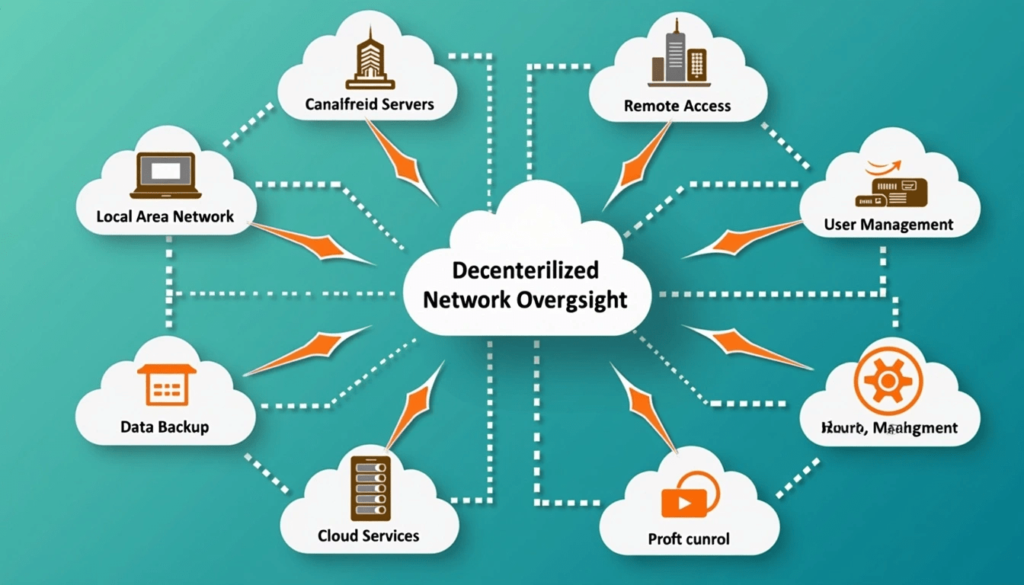Introduction
Manual configuration is inefficient and prone to errors as networks increase in size and complexity. APIs (Application Programming Interfaces)in Network Automation are the reason for this. This is where Application Programming Interfaces (APIs) come into play, as they allow different systems to communicate with each other smoothly, thus increasing the efficiency and scalability of network automation. They serve as intermediaries between software applications and network devices, enabling administrators to perform tasks without human interaction.
In this blog, we will take a closer look at what APIs have done for network automation and why they have become a key element for the modern IT infrastructures.
The Importance of APIs in Network Automation
This allows Network Management Products to work with Network Devices and other Network Software Products.
- Provisioning, monitoring and troubleshooting repetitive tasks.
- Minimize human errors through the prevention of manual configurations.
- Scalability improvement due to enhanced scalability, enabling networks to grow without concurrent operational overhead.
- Open up to strengthening security through enforcement of policies.
These protocols enable standardized interactions between different software components, allowing a network automation system to communicate seamlessly with devices and applications from different vendors. This is exactly why APIs in Network Automation are changing the environment of networking.

How APIs Simplify Network Automation for Beginners
.Fetch real-time network status without logging into devices manually.
- Deploy configurations consistently across multiple devices.
- Integrate networking with cloud services for dynamic resource allocation.
With user-friendly documentation and automation frameworks like Ansible for Network Automation, beginners can leverage APIs to simplify networking tasks.
APIs vs. Traditional Network Management
Traditional network management is mostly carried out through manual configurations, which can be error-prone and slow to implement. APIs, by contrast, add in:
Efficiency: Automation allows for less manual interjection.
Uniformity: APIs maintain the same configurations across all devices.
Flexibility: APIs interact with many vendors and platforms, as opposed to CLI commands that offer proprietary interfaces.
Transfer of the management from reactive troubleshooting to proactive network usage with acceptance of APIs.

Using Ansible for Network Automation with APIs
One of the most popular tools to automate network operations using APIs is Ansible for Network Automation. Ansible modules communicate with our network devices using APIs instead of requiring manual CLI-based commands. Some key benefits of using Ansible are:
Agentless: No software installation required on any network devices
Scalability: Execute a single playbook to automate thousands of network devices.
Strength: Consistency: Provide Standard Configuration for All the devices on the network
With the power of the API integrated with Ansible, network engineers are able to design dynamic, scalable automation workflows.
Challenges and Considerations in API-Based Network Automation
The benefits of APIs are substantial, but they also present challenges:
Security Issues: If not adequately secured, APIs may become gateways for cyber attacks on the entire network.
Vendor Compatibility: Certain network devices may not comply with the standard APIs.
Learning Curve: Inexperienced users may find it tricky to understand API authentication and request structures.
The best way to overcome such challenges is to follow best security practices such as secure authentication methods, and keep an eye on vendor documentation.
Best Practices for Implementing APIs in Network Automation
To help you get the most out of APIs in your network automation journeys, consider following these best practices:
Use Standardized APIs: Use RESTful or OpenConfig APIs.
API Security: Use OAuth, token-based auth or VPN tunnels
Log API Metrics: Track the performance of your APIs.
But First, Automate: Move slowly from basic automation to advanced workflows
These are some tips for the organizations to transition to an API driven approach for network automation.
Embracing APIs for a More Intelligent Network
APIs are an holding, evolving force in a realm of network automation. They offer a proven, scalable and efficient solution for managing modern networks. If you’re a novice looking to embark on network automation for beginners or a seasoned professional using Ansible for Network Automation APIS will be the crux of your automation strategy. Adaptability is key to harness the power of new technologies and reap its benefits.
FAQS
What is the purpose of API automation?
API automation streamlines workflows, reduces manual tasks, improves efficiency, and ensures seamless communication between applications and networks.
What are APIs in networking?
APIs in networking enable automation by allowing software to interact with network devices, simplifying configuration, monitoring, and management.
What is the role of APIs in enterprise automation?
APIs in enterprise automation enhance scalability, integrate multiple systems, automate repetitive tasks, and improve overall network efficiency.
What is the purpose of network automation?
Network automation reduces manual intervention, enhances reliability, improves security, and enables scalable network management with minimal effort.
What is the best network automation tool?
Ansible, Cisco DNA Center, and Terraform are top network automation tools, offering scalability, efficiency, and seamless integration with APIs.

